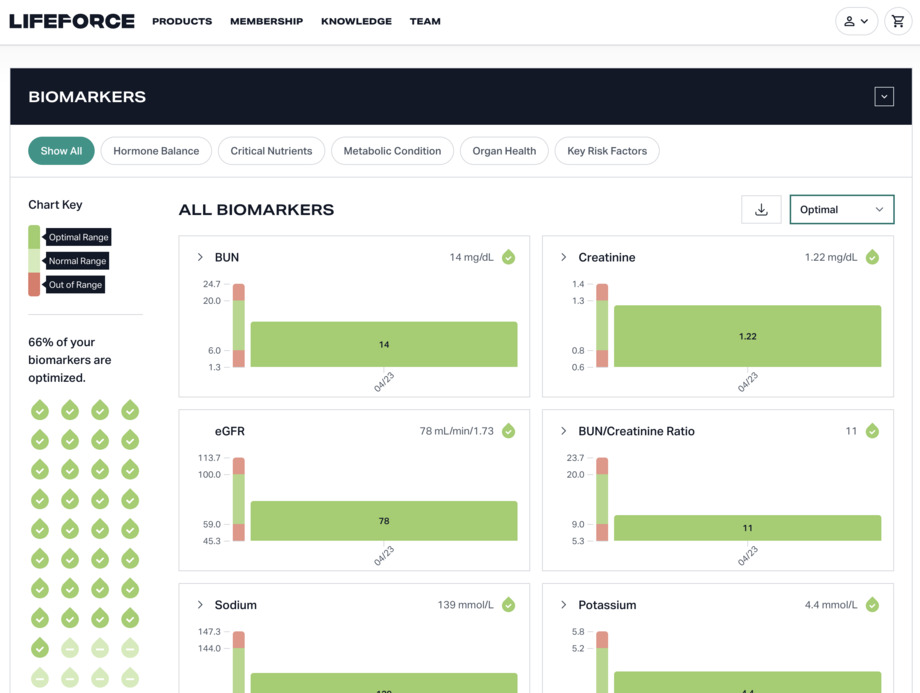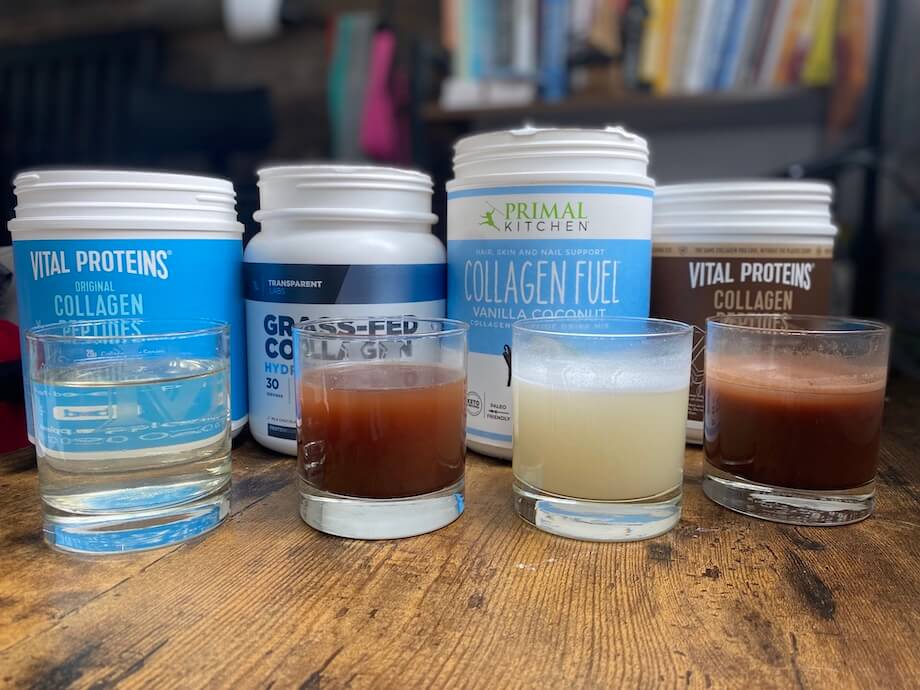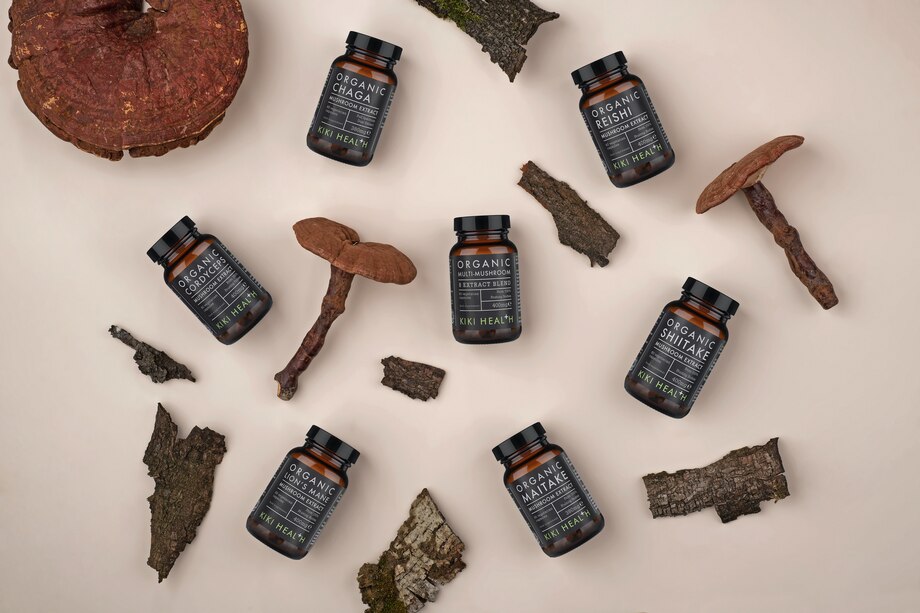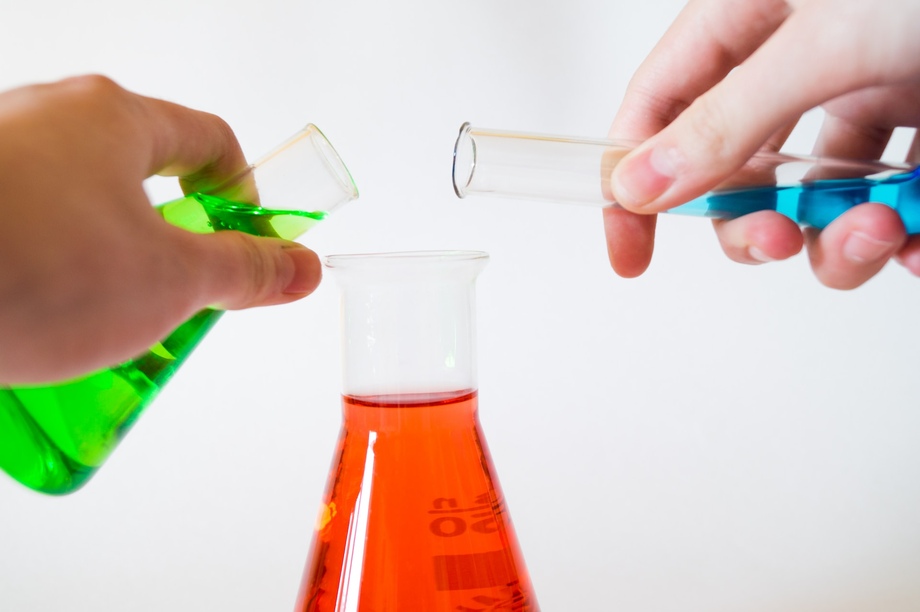We test and review fitness products based on an independent, multi-point methodology. If you use our links to purchase something, we may earn a commission. Read our disclosures.
The term “biohacking” may conjure up images of mad scientists in laboratories, conducting ill-designed experiments in dim lighting with tortuous-looking tools—ya know, like Frankenstein’s monster.
In reality, while biohacking can certainly be taken too far, it’s a much more benign practice than it might sound like. Biohacking is the practice of, well, hacking your biology in the pursuit of a variety of goals, typically health, fitness, or career-oriented.
In this beginner’s guide to biohacking, you’ll finally get your answer to the question, “What is biohacking” and learn common biohacking methods and goals, and whether it’s safe for you to try in your own life.
RELATED: Life Force Review: Tested by a Biohacking Aficionado
What Is Biohacking?
Biohacking is, in simplest terms, the practice of optimizing your biology by altering variables in your life.
According to Dave Asprey, who is often considered the “father of biohacking,” biohacking is both a verb and a noun:
“(v): To change the environment outside of you and inside of you so you have full control of your biology, to allow you to upgrade your body, mind, and your life.
(n) The art and science of becoming superhuman.”
Asprey is the author of “The Bulletproof Diet” and the founder of the Bulletproof nutrition company, well-known for its Bulletproof Coffee products and recipes.
While Asprey has been criticized for the Bulletproof diet, his published works, and for simply positioning himself as a nutrition and health expert with no medical or nutritional training or background, he is nonetheless considered the biohacking king, largely in part due to his widely publicized quest to live to age 180.

According to a 2018 publication in the journal Science & Society1, biohacking is “a do-it-yourself citizen science merging body modification with technology.”
The practice itself involves self-experimentation, which can range from relatively simple interventions like following an elimination diet and tracking symptoms as you reintroduce foods, to much more invasive—and potentially dangerous—interventions such as gene editing and inserting computer chips into the human body.
It’s often referred to as “DIY bio” or “DIY biology,” given that individuals—often without any background in any type of science—are experimenting with their own bodies and well-being.
Asprey isn’t the only one promoting biohacking as the human way forward: Other famous biohackers include Tim Ferriss, Ben Greenfield, Jack Dorsey, Tim Gurner, and Kevin Warwick.
Types of Biohacking
If you’re looking to hack your own biology, there are several routes you can take.
Lifestyle Biohacking
Lifestyle biohacking can be described as entry-level biohacking. It’s the simplest form of biohacking, and most people would just call it “wellness.”
Biohacks in this category are related to diet, fitness, sleep habits, and stress management. For instance, working out while intermittent fasting is a common practice among biohackers, as is high-intensity interval training.
When it comes to diet and fitness, biohackers are generally looking for the most robust benefits with the least amount of time and effort.
RELATED: 13 Weird Diets
The description of Dave Asprey’s 2023 book, “Smarter Not Harder: The Biohacker’s Guide to Getting the Body and Mind You Want,” even says that “The key to achieving optimum wellness…isn’t about doing more, it’s about doing less—exercising and eating smarter, not harder, and making the body’s built in laziness work for you.”

Aside from manipulating their diet and nutrition to find the perfect combination for their biology, lifestyle biohackers tend to be enthusiastic about practices, products, tools, and services that promise to deliver weight loss, metabolic benefits, anti-aging benefits, or enhanced cognitive function.
Examples include:
- Wearable health technology, such as smartwatches (but more WHOOP or Oura Ring than Fitbit or Garmin)
- Cold showers, ice baths, and other forms of cryotherapy (see the best cold plunge tubs)
- Heat therapy, such as from saunas or infrared tools
- Hyperbaric oxygen chambers
- Using metabolism trackers like the Lumen device
- Sensory deprivation tanks
- Red light therapy
- Blue light blockers
- Meditation
- Breathwork
- Elimination or strict timing of caffeine intake
- Smart lighting solutions in the home to mimic day and night light conditions
If you are interested in biohacking, lifestyle interventions such as the above are the simplest, easiest, and safest way to get started.
Nutrigenomics
Nutrigenomics, broadly, is the study of how nutrition interacts with genetics. It’s no secret that diet and nutrition play a huge role in how we feel and operate on a day-to-day basis, but what a lot of people don’t know is that “eating healthy” doesn’t look the same for everyone.
What is healthy for one person may be terrible for another, and biohackers are concerned with optimizing their diet to specifically support their biology.
Biohackers may go about this by engaging in blood testing to check for various biomarkers, wearing a continuous glucose monitor to understand their body’s blood sugar response to certain foods, or both.
Many biohackers try to interpret their own results from such testing, but it’s not uncommon to work with a registered dietitian nutritionist, functional medicine doctor, endocrinologist, or other specialized professional to get individualized results.

For instance, Life Force, a telehealth startup founded by Tony Robbins, Dr. Peter H. Diamandis, Joel Jackson, and Dugal Bain-Kim, offers lab testing kits that test for more than 40 biomarkers. You’re then matched with a medical professional who interprets your lab results and provides a move-forward plan to optimize your diet.
Taking supplements also falls into this category of biohacking. While most people tend to guess at what supplements they need—or just take what the internet tells them to take—biohackers use lab testing to identify deficiencies or below-optimal levels of specific vitamins, minerals, amino acids, and metabolites.
RELATED: Best Biohacking Products
Once a biohacker knows and understands what their body needs based on lab tests, they create a supplement regimen accordingly. Biohackers may take typical supplements, such as vitamin D, magnesium, or protein, but they tend to go beyond the basics.
Supplements that are popular in the biohacking space include:
- Nootropics, such as ashwagandha, cordyceps, Lion’s mane, and rhodiola rosea. These are often called “smart drugs” or cognitive enhancement supplements.
- Purported anti-aging supplements like biotin, collagen, coenzyme Q10 (CoQ10), resveratrol, and NAD+ boosters
- Root and plant extracts, such as ginkgo biloba, panax ginseng, Bacopa monnieri, and various terpenes
- Supplements for sleep, like melatonin, valerian root, glycine, and L-theanine
You don’t need to undergo lab testing to start taking supplements, although it could certainly be helpful. It’s also not a bad idea to consult a registered dietitian before taking any supplements. If you want to start exploring supplement options, take a look at some of our guides to the best supplements:

Biological
“Biological biohacking” is a bit of a tautology, but it does refer to its own subset of biohacking. This type of biohacking includes things like hormone replacement therapy, stem cell therapy, and gene editing.
Generally, stepping into this realm means working with a licensed healthcare provider. I’d encourage you to be wary of any treatments such as hormone replacement therapy that are not provided via a licensed clinician.
One of the most well-known instances of biologics was when Jo Zayner, a prominent biohacker, injected herself with CRISPR during a live-streamed event. CRISPR (“clustered regularly interspaced short palindromic repeats”) is a genomic technology that scientists use to alter DNA.
According to the Center for Genetics and Society, Zayner pulled the stunt in an attempt to make herself more muscular. According to The New York Times, the intended outcome did not result.
This type of biohacking can be very dangerous, and Zayner herself said on record that she regrets performing the injection live because she thinks people may get hurt trying to do the same thing. It doesn’t stop her from selling CRISPR kits to the general public through her business, The ODIN, though.
In 2019, Zayner was under investigation for practicing medicine without a license, but according to Bloomberg, the Medical Board of California dropped the investigation.
Biohacking publicity stunts aside, it’s critical to work with a licensed medical professional if you want to explore the potential health benefits of things like hormone replacement therapy or stem cell therapy.
Body Modification
This is where things get interesting—and dicey. There is a subculture of biohackers known as “grinders.” These individuals physically modify their bodies to push the limit of what it means to be human.
Examples of grinder biohacking include:
- Kevin Warwick’s implantation of a chip in his arm that allowed him to open doors and turn on lights with a wave of his hand, also known as Project Cyborg.
- Tim Cannon’s massive chip implantation that he performed on himself without any medical professionals—or anesthetics.
- Lepht Anonym’s implantation of an RFID sensor that allowed her to lock and unlock her computer.
This has been called the transhumanism movement, wherein the goal is to blur the line between humans and technology.
I shouldn’t need to say this, but: Performing body modifications such as those described above is inherently dangerous and can result in bodily injury or illness. It is highly inadvisable.
Biohacking Goals: Why Do It?

So, what drives someone to biohack themselves?
You could argue that anyone who follows a diet or sleeps with an eye mask or times their protein intake is biohacking. But do those individuals really have the same goals and intentions as the people implanting computer chips into their own arms with no medical supervision or guidance?
I don’t have the answer to that, but I suppose the bottom line is that biohackers want to change something about themselves. If we take body modification out of the equation, I think things become much more cohesive and similar at the root.
Person A, on a diet; person B, motoring blood sugar responses; and person C, undergoing hormone replacement therapy, likely have the same underlying motivation: to feel and/or look better.
The common goals among lifestyle biohacking, nutrigenomics, and biologics include slowing the aging process, having more energy, improving physical or athletic performance, enhancing brain function, getting rid of or minimizing the effects of chronic health conditions, and optimizing one’s overall health.
Is Biohacking Safe?
It’s impossible to make a blanket statement that biohacking is safe or not safe, simply because there are so many ways to do it.
Is wearing a meditation headband to hack your brainwaves safe? Yeah, probably. Is intermittent fasting safe? Sure, generally. Stem cell therapy under the supervision and guidance of a licensed medical professional? Yeah.
Is injecting your eyeballs with chemicals to achieve night vision safe? Hopefully I don’t need to answer, but no.
Whether or not biohacking is safe completely depends on the level to which you take it.
And, it’s important to remember that even the simplest forms of biohacking, such as taking supplements, can come with side effects. The best way to ensure your safety is to speak with relevantly credentialed professionals in the areas you are interested in.
Does Biohacking Actually Work?

Again, it’s impossible to make a blanket statement that biohacking does or doesn’t work. There are tons of variables to consider here.
Even when considering simple interventions under the umbrella of lifestyle biohacking, nothing works for everyone. Some people find the keto diet to work best for them, while others thrive on a more balanced diet. Some individuals will respond well to high-intensity exercise while others need something more relaxed and low-impact.
RELATED: How Much HIIT Per Week
Hacking your biology to the point of health optimization requires a lot of experimentation and, as is fundamental to the concept of biohacking, individualization is key.
What Is Biohacking? Final Thoughts
Biohacking is the practice of changing one’s internal or external environment to achieve optimal health. There are three main types of biohacking: lifestyle, nutrigenomics, biologics, and body modification.
- Lifestyle biohacking includes normal lifestyle interventions like diets and exercise, along with various therapies like infrared and cold exposure
- Nutrigenomics deals with how nutrition interacts with a person’s genealogy and typically includes some form of nutritional supplementation
- Biologics requires the care of a medical professional and involves stem cell therapy, hormone replacement therapy, and similar therapies
- Body modification or grinder biohacking, a subculture of biohacking, involves DIY implantations and transhumanism, and falls outside of the scope of health, fitness, and wellness
What Is Biohacking? FAQs
Is biohacking legal?
There are no laws in place to prevent people from experimenting on themselves. However, biohackers who experiment with or on others, or sell biohacking equipment to the public, may face legal consequences. The reality is that biohacking culture has significantly outpaced legislation, but this doesn’t mean laws aren’t coming.
What is a biohacking diet?
A biohacking diet can be any diet, but in this sense, they are usually intense and unsustainable for the majority of people. For instance, intermittent fasting and keto are two popular protocols among biohackers. The most famous biohacking diet is probably the Bulletproof Diet, popularized by Dave Asprey, a prominent biohacker.
What is the difference between biohacking and biotechnology?
Biohacking is when someone performs experiments on themselves in an attempt to optimize their life. Biotechnology has many definitions, but is broadly “the use of biology to solve problems and make useful products,” according to Britannica. Some biohacking practices may draw from the concept of biotechnology.
References
- Yetisen AK. Biohacking. Trends Biotechnol. 2018;36(8):744-747. doi:10.1016/j.tibtech.2018.02.011
Further reading

The term “biohacking” may conjure up images of mad scientists in laboratories, conducting ill-designed experiments in dim lighting with tortuous-looking tools—ya know, like Frankenstein’s monster. In reality, while biohacking can certainly be taken too far, it’s a much more benign practice than it might sound like. Biohacking is the practice of, well, hacking your biology in the pursuit of a variety of goals, typically health, fitness, or career-oriented. » Read more about: What Is Biohacking? Understanding the Practice of Biological Optimization » Read more

If you don’t have a weight bench in your garage gym, do you even really have a garage gym? I kid—any home gym is a good gym. In all seriousness, though, a weight bench is a staple piece of home gym equipment for people all over the world. Bench press is one of the big three lifts, after all. If you don’t yet have a bench or you’re on the hunt for a new one, you’ve come to the right place: Keep reading for my Fringe Sport Comp Flat Bench review.Why You Should Trust UsI’ve tested all of the best weight benches currently available. I’ve also tested my fair share of not-so-great weight benches. So, I know what to look for in a good weight bench for a home gym and I can tease out all of the pros and cons of different benches from different brands. Read more

For this Pride pre-workout review, a sports dietitian reviews the supplement from the same company that makes OxyShred to see if it’s worth the cost. Read more

Compared to the regular deadlift, the trap-bar deadlift works your quads more, and lowers your risk of getting injured. A trainer explains how to do it. Read more

